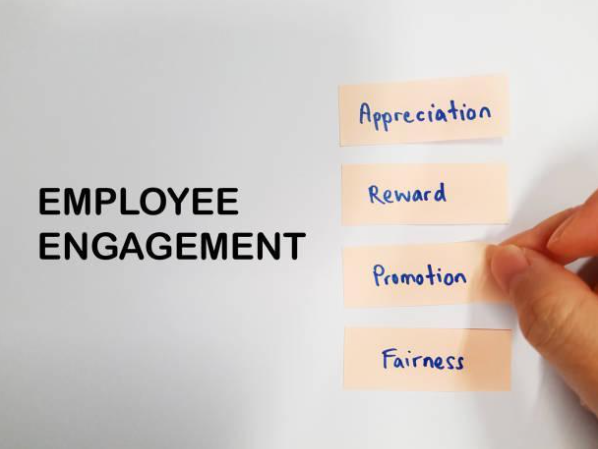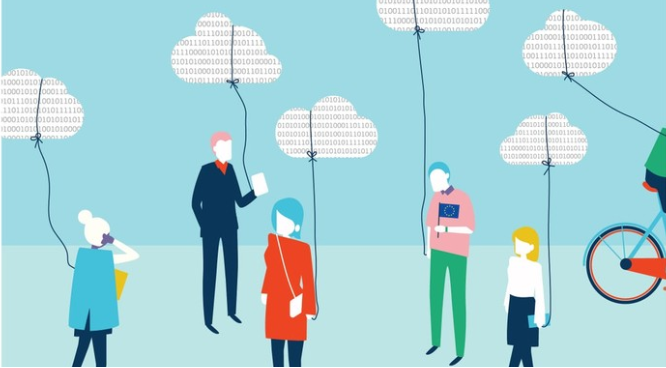Kristallnacht, or simply Pogromnacht, occurred 80 years ago on November 9-10, 1938. The Pogrom was…
How to Design a Thriving Workplace? Employee Engagement
When people are financially invested, they want a return. When people are emotionally invested, they want to contribute.”
Simon Sinek
In the high-octane world of modern business, where talent reigns supreme, employee engagement isn’t just a feel-good metric – it’s the ultimate performance booster.
Engaged employees aren’t just cogs in the machine; they’re passionate drivers fueled by purpose and commitment, propelling their companies to unimaginable heights.
So, how do we crack the engagement code and unlock the hidden potential within our workforce?
What is Employee Engagement?
Employee engagement lies not in simply showing up at a desk but in the emotional and intellectual connection an individual has with their work, colleagues, and the organizational purpose.
It’s a deep-seated commitment that translates into discretionary effort, infectious enthusiasm, and an unwavering drive to make a difference.
Research speaks volumes; a Gallup study reveals that highly engaged teams experience a 23% rise in profitability and a 43% improvement in retention compared to their disengaged counterparts.
Imagine – igniting just that extra spark can transform business outcomes!

Factors Influencing Employee Engagement
Several factors play a pivotal role in determining the level of employee engagement within an organization. Key influencers include the work environment and culture, leadership and communication, and recognition and rewards.
Work Environment and Culture
A positive work environment and a robust organizational culture are foundational to fostering employee engagement. When employees feel a sense of belonging, trust, and shared values, their commitment to the organization deepens.
Establishing a culture that encourages teamwork, open communication, and mutual respect is crucial for fostering engagement.
Leadership and Communication
Effective leadership and transparent communication are critical components of employee engagement. Leaders must inspire and guide their teams, particularly in environments where teamwork and collaboration are paramount.
Clear communication channels, regular updates, and an open-door policy contribute to a culture of trust and engagement.
Recognition and Rewards
Recognition and rewards play a pivotal role in motivating employees and reinforcing positive behaviors.
Organizations can implement tailored recognition programs that acknowledge teamwork, achievements, and contributions. This not only boosts morale but also strengthens the bonds within the team.

Common Challenges in Employee Engagement
Despite the acknowledged importance of employee engagement, organizations often face challenges in maintaining high levels of commitment among their workforce.
Identifying and addressing disengagement requires a proactive approach, tackling issues such as burnout, lack of communication, and insufficient recognition.
Identifying and Addressing Disengagement
Regular employee surveys, one-on-one meetings, and open forums can help identify signs of disengagement.
Organizations should establish mechanisms to address these issues promptly, whether by revisiting organizational policies, improving communication channels, or providing additional support to teams facing challenges.
Impact of Remote Work on Engagement
The rise of remote work has added a layer of complexity to employee engagement. Organizations must adapt their strategies to accommodate the unique challenges associated with virtual collaboration.
Leveraging technology, fostering a virtual team culture, and ensuring clear communication channels are imperative in maintaining engagement in remote work settings.
The landscape of engagement is constantly evolving, demanding agility and responsiveness. Today’s employees crave flexible work arrangements, with 87% prioritizing remote work options, according to SHRM.
They seek purpose-driven work that fuels their sense of accomplishment, with up to 70% yearning for a deeper connection to their job’s impact, as McKinsey & Company reports. Understanding these shifting sands is crucial to crafting effective engagement strategies.
Ways To Increase Employee Engagement At Work
In the pursuit of enhancing employee engagement, organizations can implement specific strategies that address the unique needs of their workforce.
Four key approaches include providing clarity, developing the team, letting people influence decision-making, and offering authentic recognition.
Provide Authentic Recognition
Recognition is a powerful motivator. Organizations should establish formal recognition programs that celebrate individual and team achievements. Authentic and timely recognition reinforces positive behaviors and contributes to a culture of appreciation.
Let Your People Influence
Empowering employees to contribute ideas, share feedback, and influence decision-making processes fosters a sense of ownership and engagement. Organizations can create forums for collaborative problem-solving, encouraging employees to contribute their insights and perspectives.
Develop Your Team
Investing in the professional development of employees not only enhances their skills but also demonstrates a commitment to their growth. Organizations can offer training programs, mentorship initiatives, and opportunities for skill diversification, contributing to increased engagement and job satisfaction.
Provide Clarity
Uncertainty breeds disengagement. Organizations should prioritize providing clarity regarding roles, expectations, and organizational goals. Clearly defined objectives empower employees to align their efforts with the company’s mission, fostering a sense of purpose and commitment.
Conclusion
In summary, employee engagement is a critical element for organizational success. By understanding the factors influencing engagement, addressing common challenges, and implementing effective strategies, businesses can cultivate a workforce that is not only productive but also deeply committed to the organization’s mission.
The future outlook for employee engagement involves adapting to evolving work dynamics, leveraging technology, and continuously refining engagement strategies. By doing so, organizations can navigate the path to sustained success fueled by an engaged and motivated workforce.
Revitalize your team’s spirit with Mutombo Coffee – where exceptional flavor meets unparalleled employee engagement. Elevate your coffee experience now!
Founded by NBA Hall of Famer and global humanitarian, Dikembe Mutombo and social investor Bob Bush, Mutombo Coffee was created to amplify the mission and values of our corporate partners while supporting African and Latin American farmers.a
FAQs
When does employee engagement reach its peak?
The ideal state of employee engagement is characterized by a workforce that is emotionally committed to the organization’s goals, values, and mission. It goes beyond mere job satisfaction and involves a deep sense of purpose and motivation among employees.
What is the state of engagement?
The state of engagement refers to an employee’s promise, spirit, and devotion to their work and the company. Engaged employees are more likely to contribute positively to the workplace, driving productivity and fostering a positive organizational culture.
How do you engage employees? What are the 5 C’s?
To effectively engage employees, organizations should focus on the 5 Cs of employee engagement.
- Care – Employees need to feel cared for and supported. Take an interest in their lives and wellbeing. Be empathetic and provide resources to help them manage work-life balance.
- Connect – Foster connections between employees. Encourage team building activities and collaboration. Build personal relationships and get to know them as individuals.
- Coach – Provide coaching, mentoring, training, and growth opportunities. Help employees develop skills, set goals, and advance their careers. Give constructive feedback.
- Contribute – Make sure employees feel their work has meaning and purpose. Explain how their roles contribute to the organization’s mission and goals. Enable them to provide input and ideas.
- Congratulate – Recognize and celebrate wins and milestones. Praise good work frequently and sincerely. Highlight accomplishments publicly.
References



